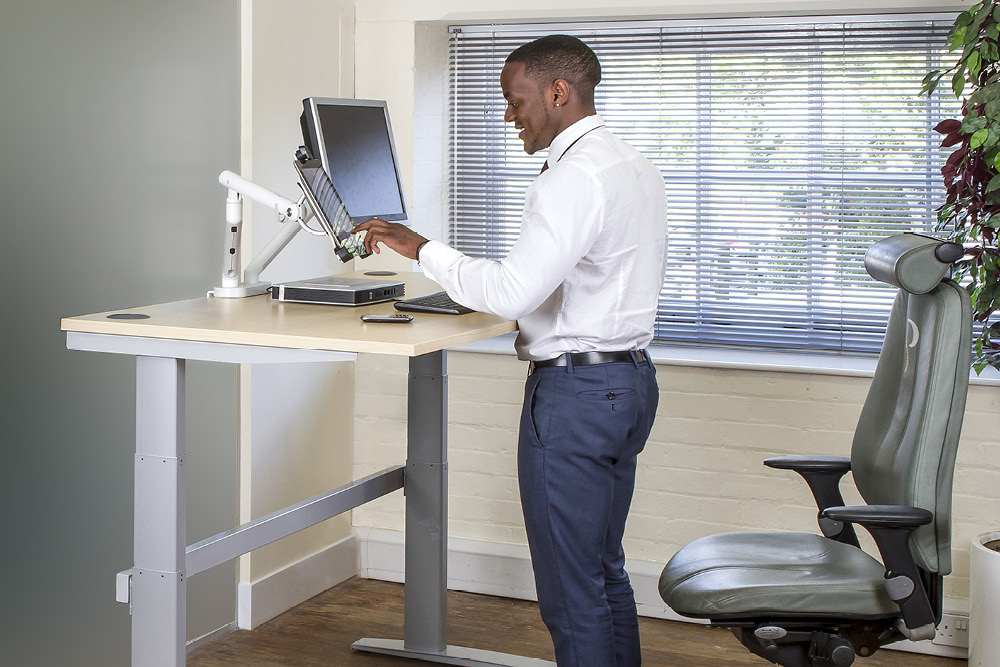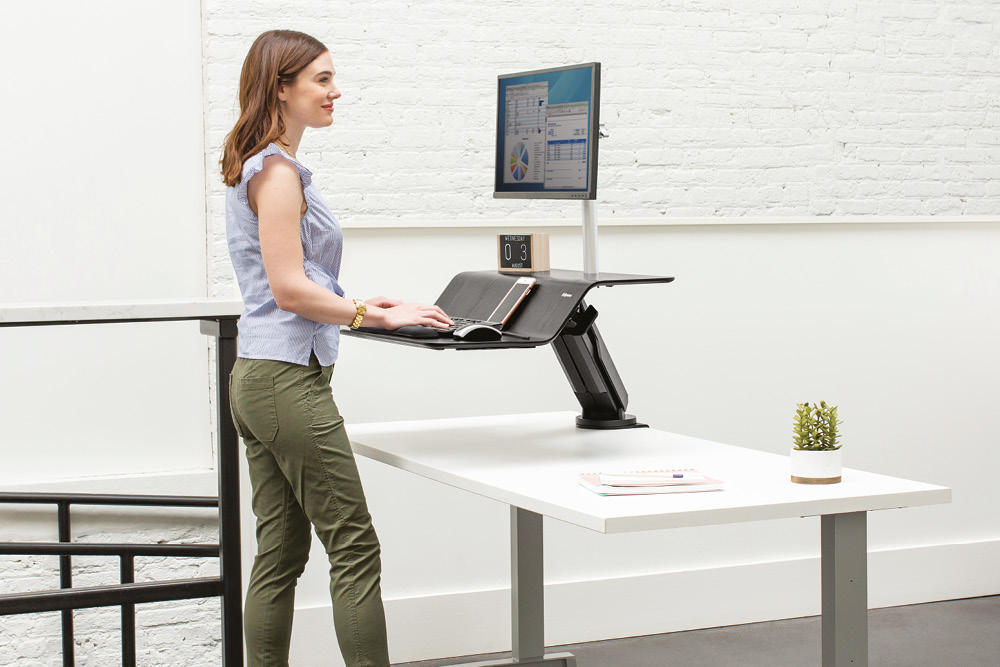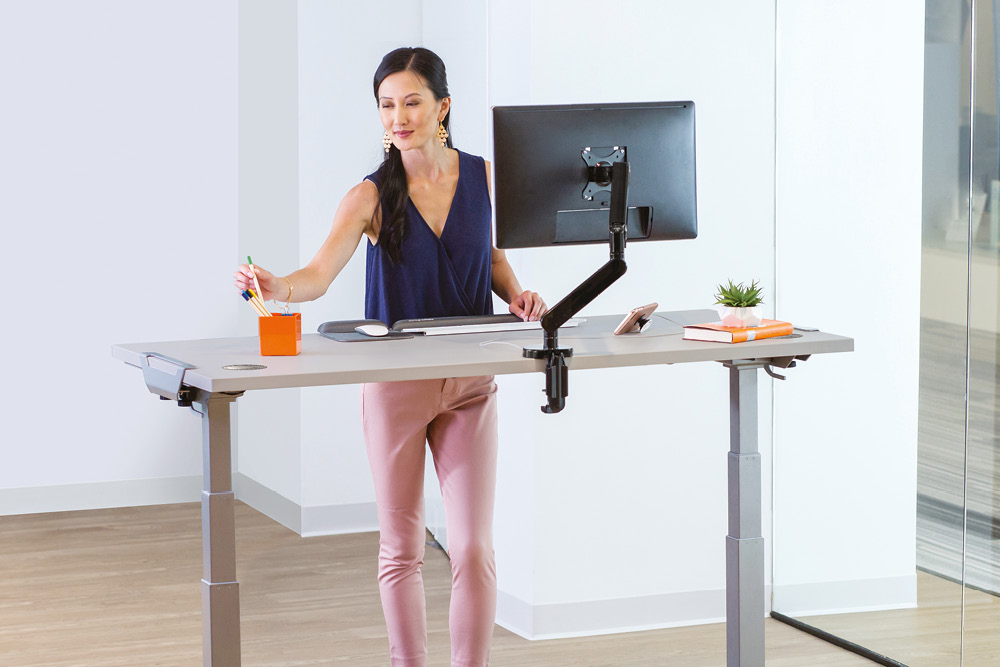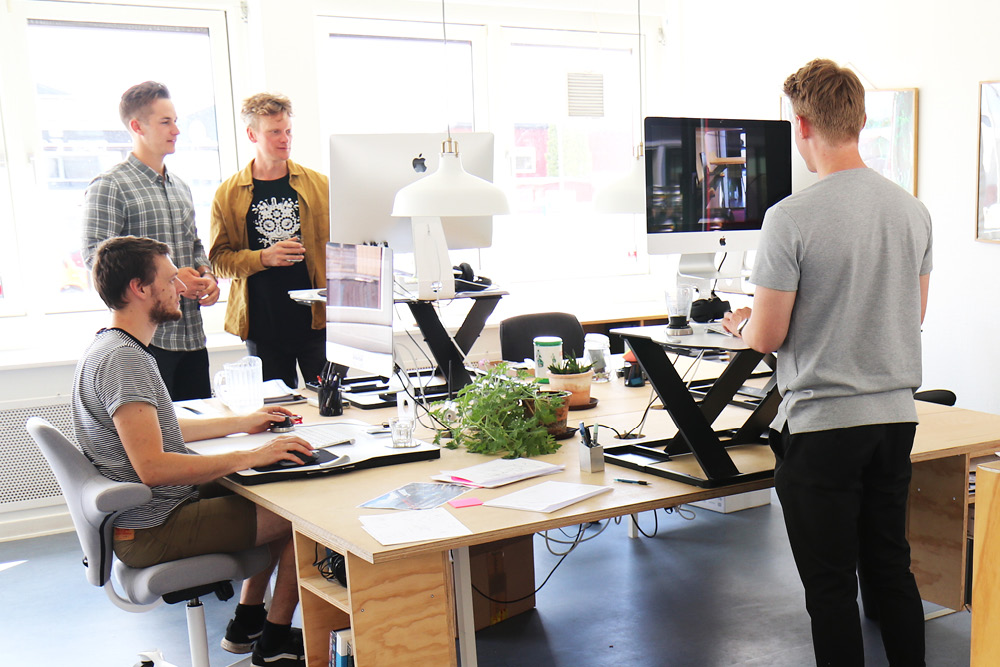How does using height-adjustable desks, known by some as ‘standing desks’, affect physical, biochemical, psychological, and work-related health and performance? A fascinating new study by the University of Leicester has just been published by the British Medical Journal.
Dr Charlotte Edwardson, Associate Professor in Physical Activity, Sedentary Behaviour and Health, approached ergonomic specialists Posturite to supply sit-stand platforms for her research and controlled trial on the ‘Effectiveness of an intervention for reducing sitting time and improving health in office workers’.

Many national guidelines for public health now include recommendations for reducing or regularly breaking up sedentary time, including for the first time guidelines from the World Health Organisation.
Dr Charlotte Edwardson concluded that:
“Measures including height-adjustable desks were an effective intervention on wellbeing at work.
Small improvements were found in stress, wellbeing, vigour and pain in the lower extremity.
Our multicomponent intervention (SMART Work and Life) can successfully reduce sitting time but is three times more effective at reducing sitting when delivered with the provision of a height-adjustable desk.”
Why is ‘standing desk’ actually an inappropriate term?
Height-adjustable desks are often inappropriately referred to as ‘standing desks’, and I asked Katharine Metters, Lead Consultant in Ergonomics at Posturite, why?
“The reason we think the terms ‘height-adjustable’ and ‘sit-stand’ are more suitable is that this equipment enables people to regularly change position and move between sitting and standing. It’s not there to replace sitting with standing.
We’re delighted to see further research demonstrating the value of sit-stand products for desk-based work. The fact that employees in the study reported feeling more energised, focused and productive when they spent part of their working day standing reminds us that these sort of interventions are both good for people and for business.”
Try standing to work for short periods of time
“It’s best to alternate between sitting and standing if you can,” agrees Dr Sarah Deedat, Bupa UK’s Senior Public Health and Behaviour Change Advisor. “If you usually sit down all day, try standing for short periods of time. You should also try doing some light exercise throughout the day, such as going for a short walk and desk stretches, along with your usual exercise routine.”
Why should we sit less?
The NHS reports that prolonged sitting slows the metabolism, reducing your body's ability to regulate blood pressure, blood sugar and break down body fat. The NHS states that some cancers, heart conditions and type 2 diabetes have been linked being inactive in studies. A sedentary lifestyle is thought to be a major threat to our health.
Unprecedented media interest in the sit-stand approach
Dr Charlotte Edwardson must have been excited to see her research make the front page of the Times on August 18 2022! The ‘Work getting you down? Try standing up’ article by the Times’ health correspondent highlighted the health and happiness of office workers being boosted by using ‘standing desks’ and how a range of measures to reduce time spent sitting can reduce stress and muscle pain.
“If the Times newsroom is any guide, standing desks are proliferating across the nation’s offices” also said the Times’ Lead Article on August 17 2022. “These workstations are a good antidote to our sedentary lives.”
The news about sit-stand desks and platforms also sparked the interest of the journalists at The Independent, The Telegraph and many more media outlets.
What’s really clear is the increasing interest in ‘standing desks’ from the public, as shown in the Google Trends graph below showing the number of searches in the UK for ‘standing desks’ from 2017 to 2022. The growth is clear to see!
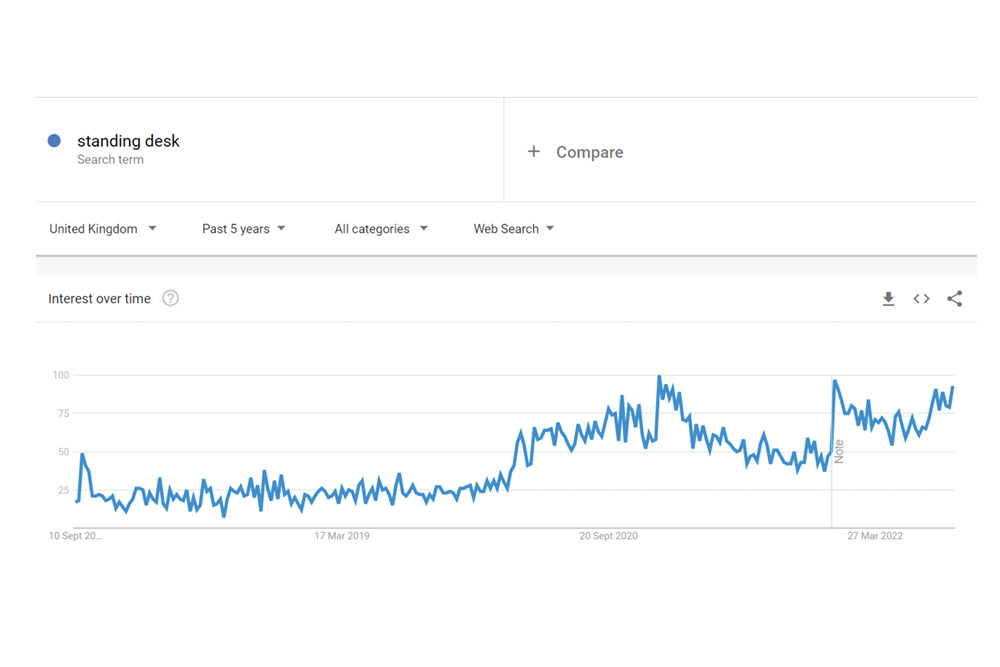 And Posturite sold 3,327 of their Opløft Sit-Stand Platforms alone in 2021 to customers working in all kinds of job roles. With an Opløft, you can easily convert an existing desk into a sit-stand desk.
And Posturite sold 3,327 of their Opløft Sit-Stand Platforms alone in 2021 to customers working in all kinds of job roles. With an Opløft, you can easily convert an existing desk into a sit-stand desk.
Opløft reviewer Amanda wrote “I now switch between sitting and standing while working, several times a day with ease, and feel better for it.”
Concentration while working
Vincent Walsh, Professor of Human Brain Research at University College London (UCL), also researched the wellbeing and productivity benefits of using a sit-stand platform. His team evaluated:
- Frame of mind
- Creativity
- Concentration and attention span
- Decision-making
- Verbal fluency
His results included participants performing a visual search test 45% more accurately after five days of Opløft use.
How does a sit-stand desk affect your own health, wellbeing and productivity? The Posturite team are all ears to hear your own review on Twitter, Facebook, LinkedIn or Instagram…





